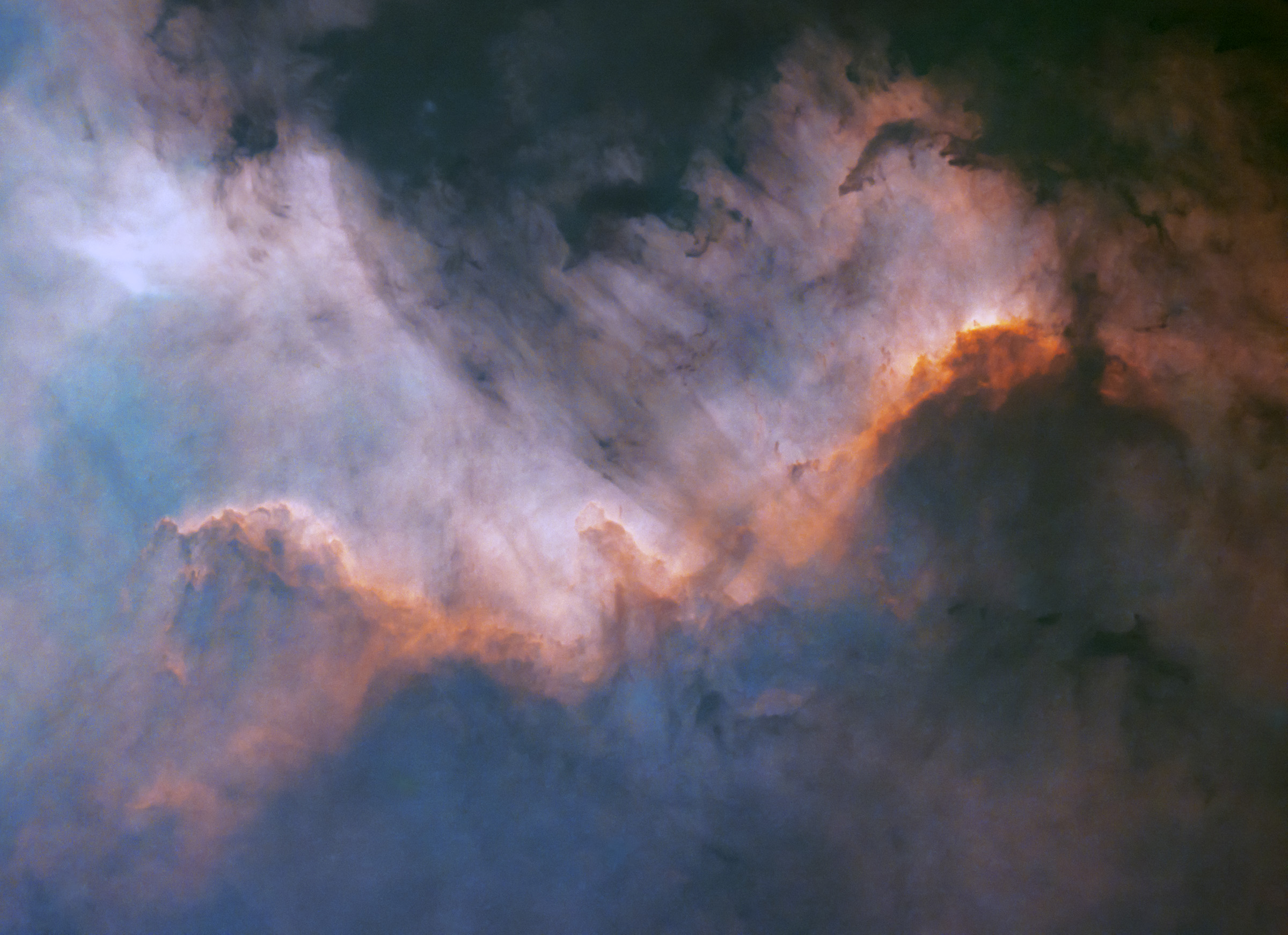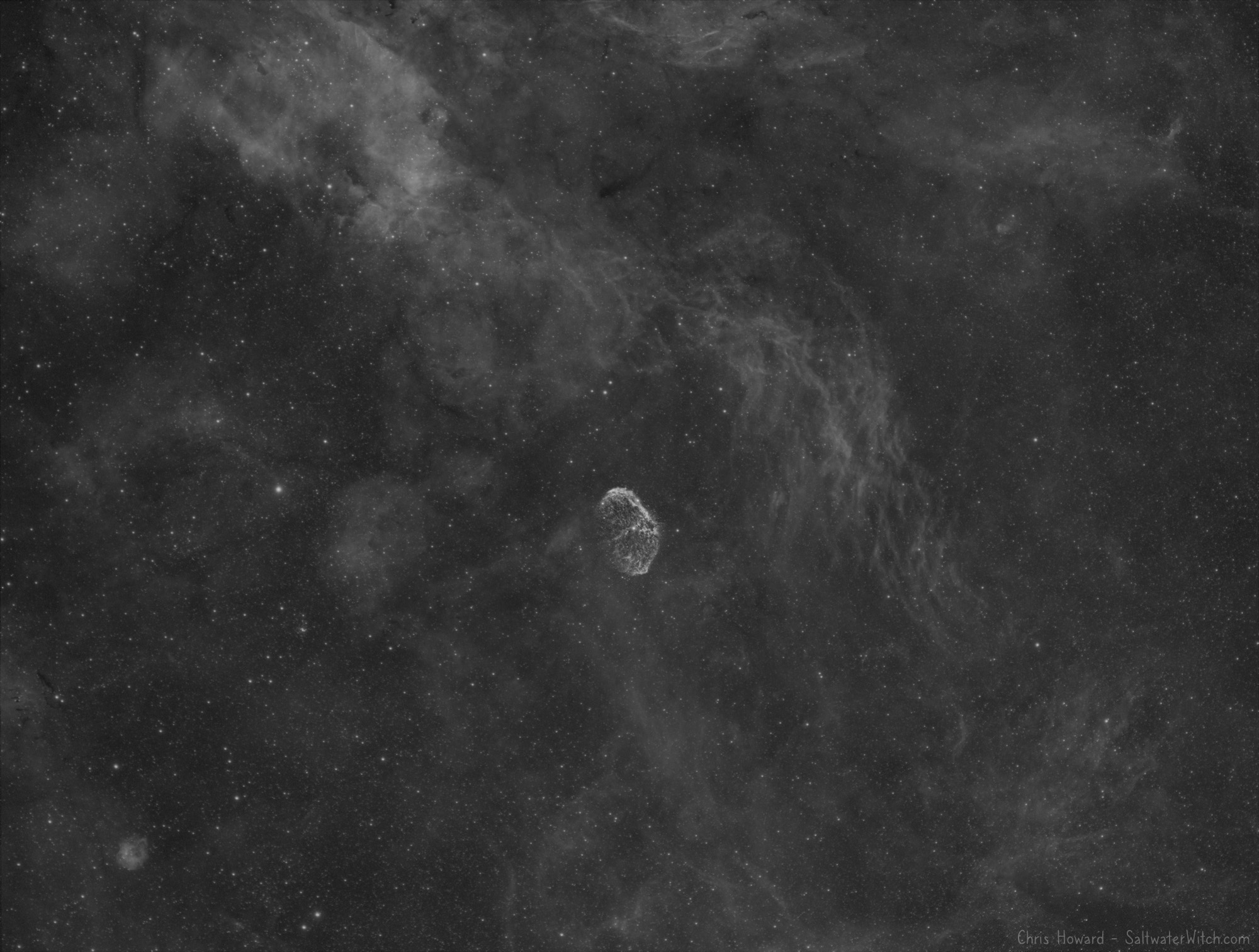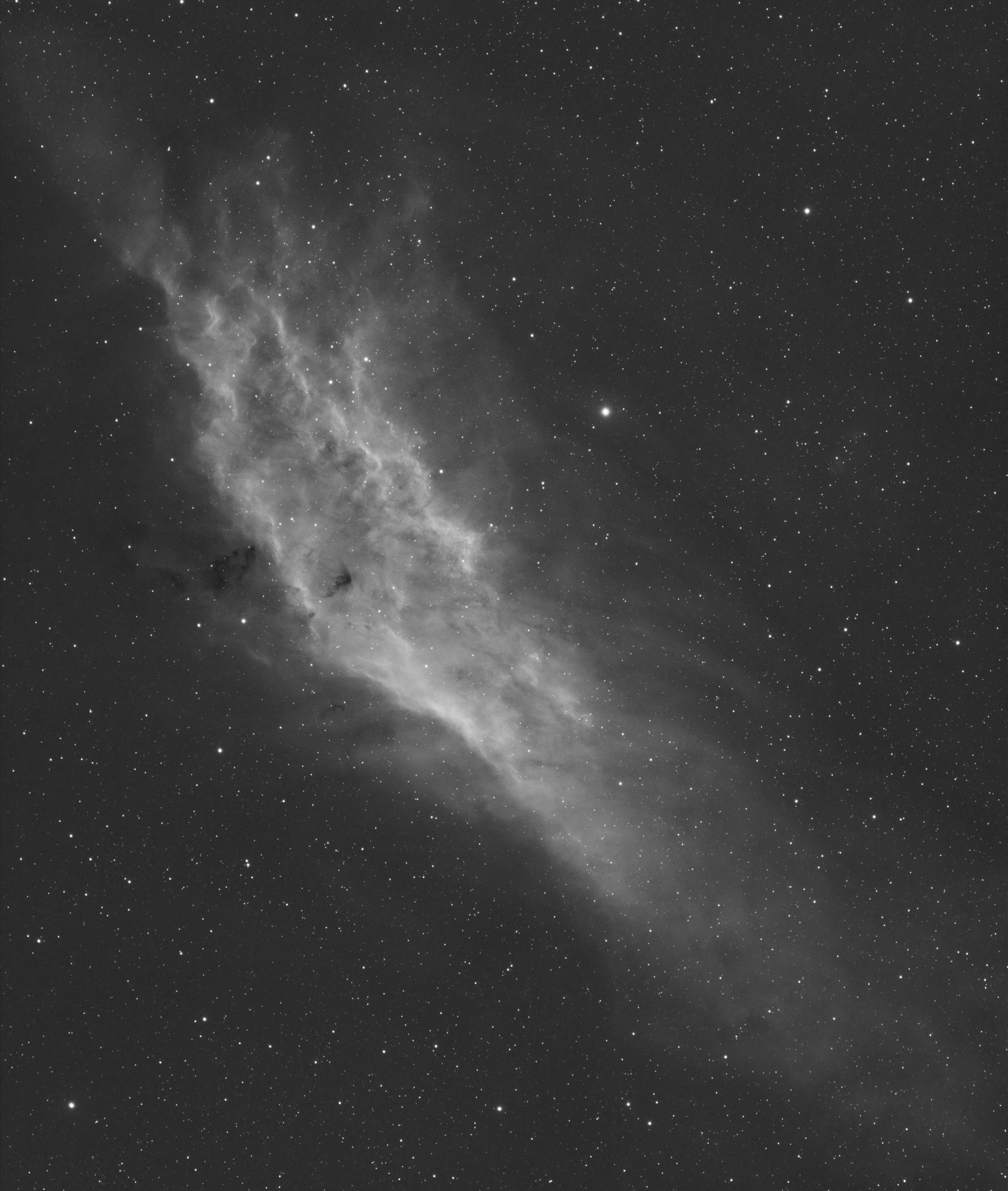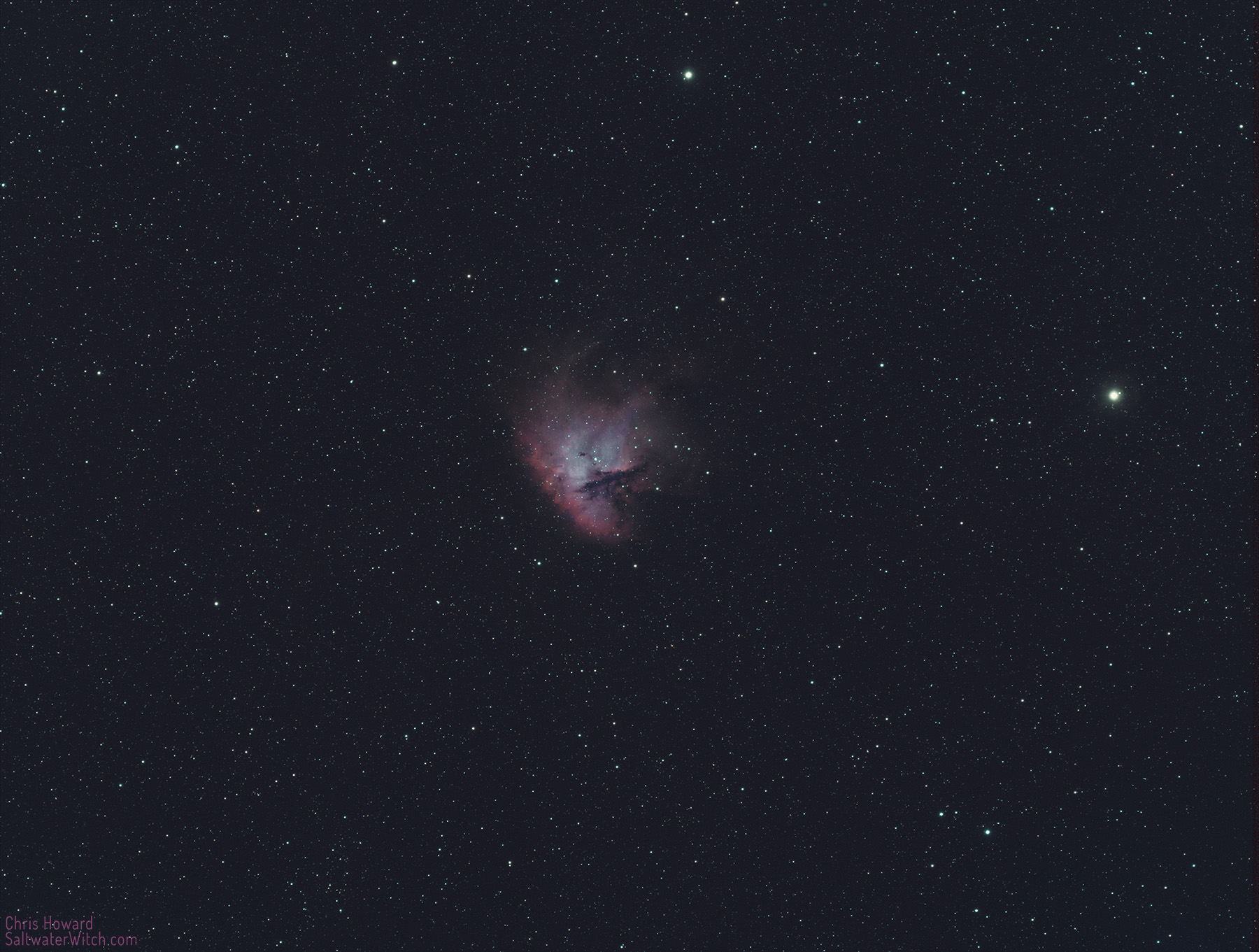Astro Session 2023-11-11
Orion’s Belt or the Three Sisters: next time you see that familiar line of three bright stars, the “Orion’s Belt” asterism at the center of the constellation Orion, imagine the backdrop of ionized hydrogen and all the other surrounding stuff you can’t see with your eyes, the bright nebulae, the dark structures of dust and molecular gasses, vast stellar nurseries with violent new stars forming out of trillions of kilometers of hydrogen clouds. There’s so much going on behind these three stars. The center of the Belt, Alnilam, is a single massive star, a supergiant that’s 375,000 times brighter than our star. Alnitak is a triple star system, and Mintaka is a binary star, with the two stars orbiting each other every 5.7 days.
Imaging Notes: 60 x 5-minute exposures stacked in PI, ZWO ASI2600MM-Pro monochrome camera cooled to -10C, 3nm Antlia Pro Hydrogen-alpha filter, William Optics SpaceCat 51 apo refractor, Sky-Watcher EQ6-R Pro mount. Shot from my backyard in coastal New Hampshire, bortle 4-ish.
Our giant neighboring galaxy, Andromeda (M31) in HaRGB. I captured this data last night, waiting for Orion to rise above 30°. Imaging Notes: 30 x 120-second subs in RGB, 30 x 180-second subs in Ha stacked in PI, ZWO ASI2600MM-Pro monochrome camera cooled to -10C, Antlia Pro filters, William Optics SpaceCat 51 apo refractor, Sky-Watcher EQ6-R Pro mount. Shot from my backyard in coastal New Hampshire, bortle 4-ish.
Posted November 12, 2023
Starless NGC 7000 Narrowband
The Cygnus Wall in NGC 7000 (Caldwell 20), the North America Nebula in the constellation Cygnus. These clouds of molecular hydrogen and oxygen are about 2600 lightyears away from us, and to provide some scale, this frame is about a hundred lightyears from one side to the other, or about 600 trillion miles or 950 trillion kilometers. Notes: stars removed with StarNet2 to highlight the softer wisps of dark nebulae scattered in front of the bright emission nebula beyond.
Posted June 12, 2023
NGC 6820 (Sh2-86) in Vulpecula
Nebula NGC 6820 (Sh2-86) in the constellation Vulpecula, surrounding the open star cluster NGC 6823. 48 x 300-second subs in 3nm Hydrogen-alpha. The intense radiation from that central cluster of stars is hollowing out the nebula, pushing the gas and dust in all directions, creating pillars of trailing material where energetic star light meets dense pockets of gas, or faster cooling heavy elements with higher inertia. Everything in that rough circular area in the bottom right is accelerating away from those bright and very hot stars in the center. I believe the dark nebulae across the middle and top are part of Dobashi 2045? (I really want to know the story with that weird faintly-backlit tail of interstellar dust at the lower left. Definitely something cool going on there).
Interesting info on the formation of pillars and "elephant trunks" in nebulae:
Jonathan Mackey, Andrew J. Lim, Dynamical models for the formation of elephant trunks in H II regions, Monthly Notices of the Royal Astronomical Society, Volume 403, Issue 2, April 2010, Pages 714–730, https://doi.org/10.1111/j.1365-2966.2009.16181.x
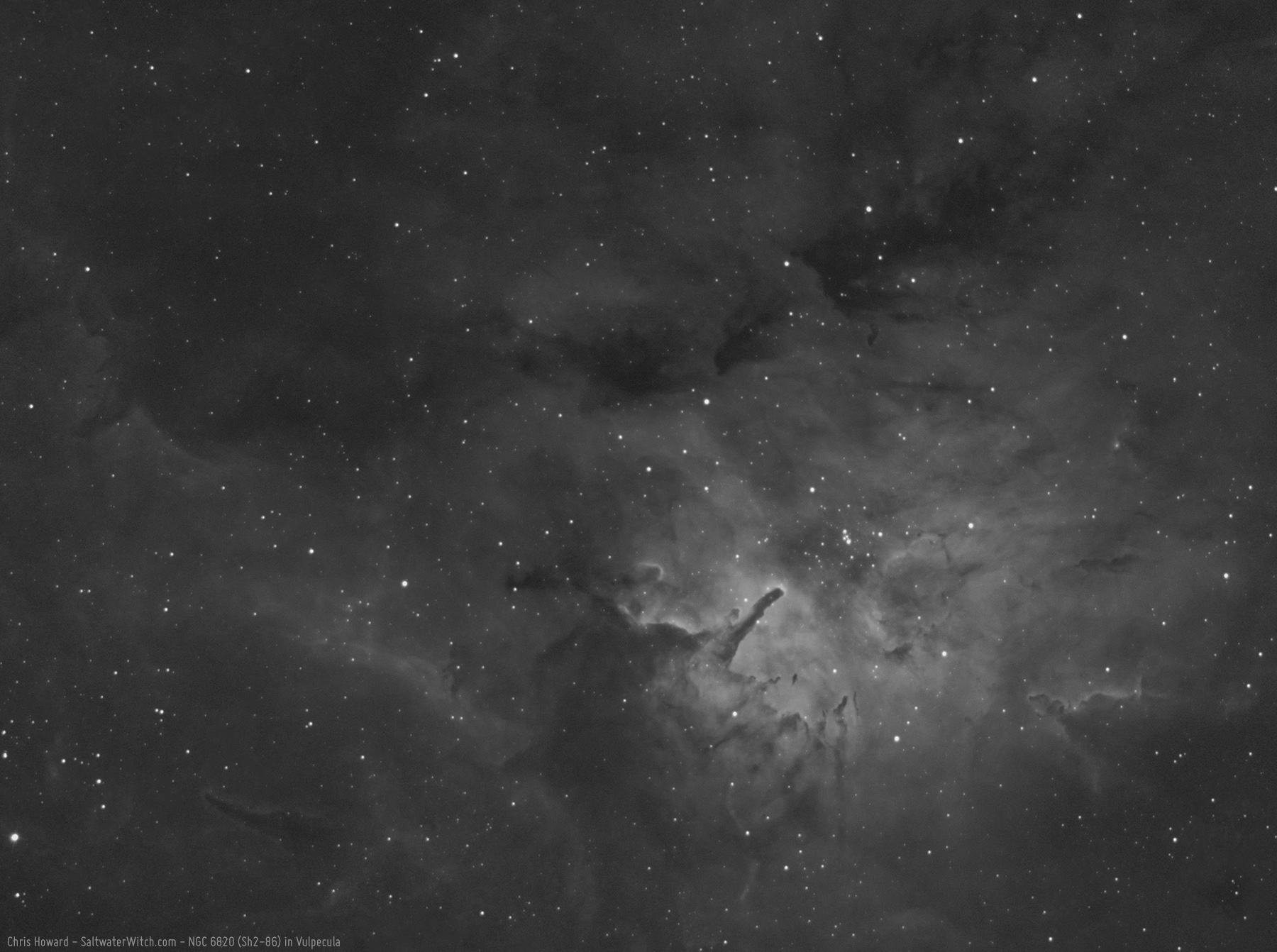
Went back last night and captured 48 subs of OIII:

Posted May 29, 2023
NGC 7000 in Cygnus
I bought the Optolong L-eXtreme dual narrowband filter last year, but I haven't seriously used it until last night. Paired with the ZWO ASI071 and the 800mm f/4 Newtonian, I am pleasantly surprised with the data and processed image. The North America Nebula (NGC 7000) in the constellation Cygnus hit 30° above the horizon around midnight, and I spent over 3.5 hours capturing data, 45 x 300-second exposures stacked in DSS. This has to be the most efficient way to get to a bi-color narrowband image, using a single filter and color astronomy camera. These colors are also close to true in terms of where they are on the visible spectrum, with hydrogen-alpha in red and oxygen III in blue.

Posted May 14, 2023
M78 in RGB
I swapped out the narrowband EFW with the RGB+Ha filters, and ran through RGB for Messier 78 (NGC 2068), a reflection nebula in Orion. I also experimented with 2x2 binning with the ZWO ASI1600MM-Pro mono camera, and it taking the resolution from 0.98 arcseconds/pixel to 1.96" / pixel worked pretty well.
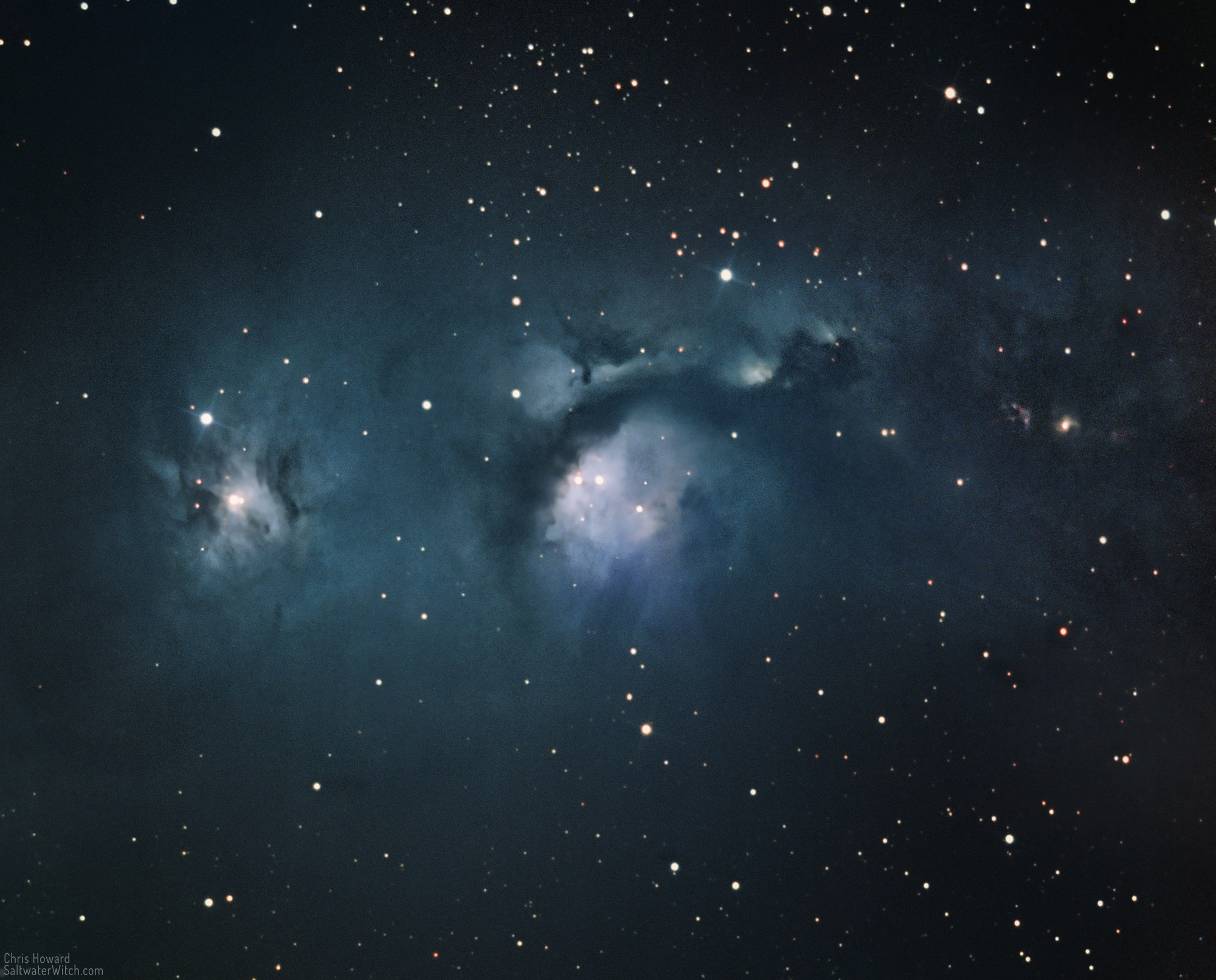
Posted October 30, 2022
The Crescent
NGC 6888, the Crescent Nebula in Cygnus, is mostly made up of ionized hydrogen with a filmy envelope of oxygen (not present in this Ha-only data). Its longest side spans about 25 lightyears, or about 235 trillion kilometers (146 trillion miles), which at only 5000 lightyears away, is a pretty good-sized deep sky object. I spent the entire night capturing hydrogen-alpha data, over 60 subs, 53 of which I used in this stack. I will come back on another night to capture the OIII data. Notes: William Optics SpaceCat51 apochromatic refractor, ZWO ASI1600MM-Pro monochrome camera cooled to -10C, 53 x 300-second subframes (about 4.5 hours of data) stacked in DSS, ZWO AM5 EQ mount, ASIAir Plus controller. (I ordered the ASIAir early August—backordered, and it arrived a couple weeks ago. This is only my second time out with the Air, and I can already see this being be my away-from-home controller).
Cropped to focus on NGC 6888 (above), here's the full FoV from the SpaceCat and ASI1600:
Posted September 17, 2022
NGC 1499 in Ha
The California Nebula (NGC 1499) in the constellation Perseus. Imaging notes: 3nm Antlia Pro hydrogen-alpha filter, William Optics SpaceCat 51 Apochromatic refractor, ZWO ASI1600MM-Pro monochrome camera.
Posted September 5, 2022
Pacman
A wide-field view of the Pacman Nebula (NGC 281, IC11, Sh20184) in Cassiopeia (Ha + OIII), about 9500 lightyears away. The massive star on the right is α Cassiopeiae (or "alpha Cass" if you're on friendly terms) which makes up the right lower point of the W asterism of the constellation Cassiopeia. The bright star at the top is eta Cass, a binary star system that's only about 20 lightyears away from us, downright neighborly, and is not part of the W asterism.


